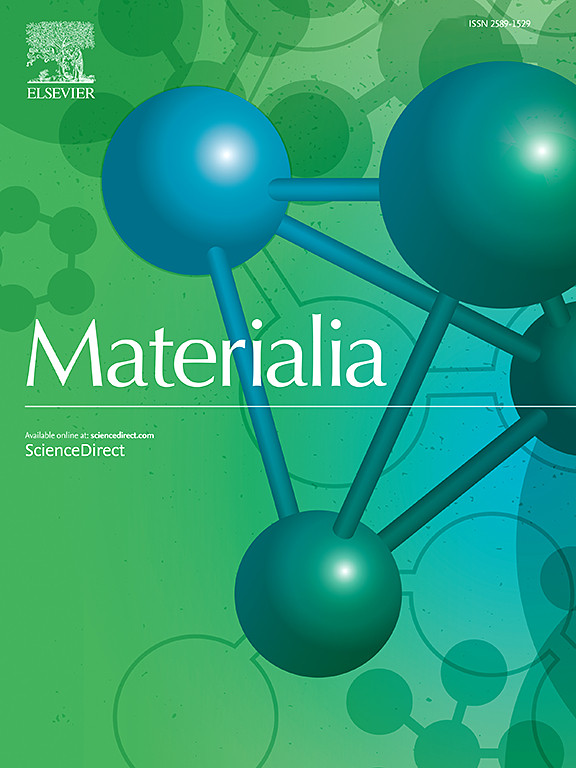钛中偏析引起的氢脆
IF 3
Q2 MATERIALS SCIENCE, MULTIDISCIPLINARY
引用次数: 0
摘要
虽然钛为各种应用提供了强度、低重量和韧性的最佳组合,但它有一个缺点:暴露在氢中会失去延展性。在这项工作中,我们将基于calphad集成的基于密度的氢偏析热力学模型与实验校准的断裂模型相结合,以研究其对钛中裂纹扩展的影响。在这里,我们建议将裂纹扩展路径建模为具有微开放结构和降低原子密度的准界面,从而实现间隙氢偏析。然后原子密度与损伤参数直接联系起来。我们发现钛中的氢偏析经历了一个显著的转变,在固溶体中只有几个氢原子百分比的阈值以上,界面氢浓度超过20at .%。将这些信息整合到我们的断裂模型中,材料的损伤演化可以用偏析影响的Griffith裂纹能来解释,从而导致材料的脱粘。我们发现,偏析转变和随后的脆化效应对系统中的温度非常敏感。目前的研究结果揭示了裂纹扩展过程中断裂韧性突然丧失的一种机制,这种机制与暴露于氢的钛合金中观察到的韧脆性转变有关。所提出的calphad集成化学-力学框架可以进一步推广到研究各种材料中更复杂的失效机制。本文章由计算机程序翻译,如有差异,请以英文原文为准。
Segregation-induced hydrogen embrittlement in titanium
Although titanium offers an optimal combination of strength, low weight, and toughness for various applications, it suffers from a drawback: loss of ductility upon exposure to hydrogen. In this work, we couple CALPHAD-integrated density-based thermodynamic modelling of hydrogen segregation with an experimentally calibrated fracture model to investigate its on crack propagation in titanium. Here we propose to model the crack propagation path as a quasi-interface with slightly opened structure and reduced atomic density, enabling interstitial hydrogen segregation. The atomic density is then directly linked with the damage parameter. We found that hydrogen segregation in titanium undergoes a significant transition such that above a threshold of only few atomic percent hydrogen in the solid solution, the interfacial hydrogen concentration exceeds 20 at.%. Integrating this information into our fracture model, the material damage evolution could be explained by a segregation-affected Griffith crack energy, resulting in material decohesion. We found that the segregation transition and subsequent embrittlement effects are critically sensitive to the temperature in the system. The present results suggest a mechanism underlying the sudden loss of fracture toughness during crack propagation, in relation to the ductile-to-brittle transition observed in titanium alloys exposed to hydrogen. The proposed CALPHAD-integrated chemo-mechanical framework can be further generalised for studying more complex failure mechanisms in various materials.
求助全文
通过发布文献求助,成功后即可免费获取论文全文。
去求助
来源期刊

Materialia
MATERIALS SCIENCE, MULTIDISCIPLINARY-
CiteScore
6.40
自引率
2.90%
发文量
345
审稿时长
36 days
期刊介绍:
Materialia is a multidisciplinary journal of materials science and engineering that publishes original peer-reviewed research articles. Articles in Materialia advance the understanding of the relationship between processing, structure, property, and function of materials.
Materialia publishes full-length research articles, review articles, and letters (short communications). In addition to receiving direct submissions, Materialia also accepts transfers from Acta Materialia, Inc. partner journals. Materialia offers authors the choice to publish on an open access model (with author fee), or on a subscription model (with no author fee).
 求助内容:
求助内容: 应助结果提醒方式:
应助结果提醒方式:


